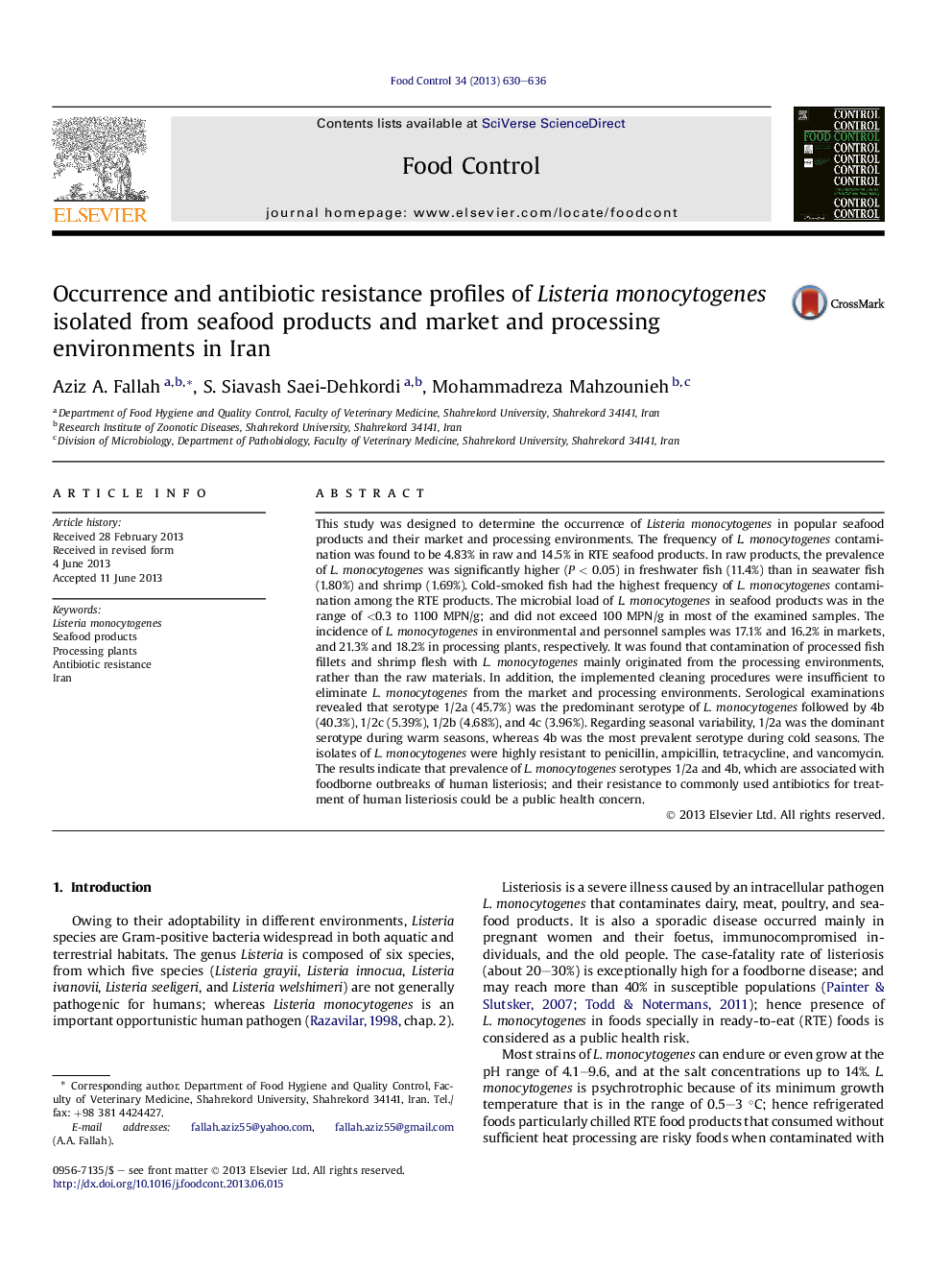| کد مقاله | کد نشریه | سال انتشار | مقاله انگلیسی | نسخه تمام متن |
|---|---|---|---|---|
| 6392397 | 1330438 | 2013 | 7 صفحه PDF | دانلود رایگان |

- Listeria monocytogenes was detected in 4.8% of raw and 14.5% of RTE seafood products.
- Market and processing environments were highly contaminated with L. monocytogenes.
- L. monocytogenes in RTE seafoods mainly originates from the processing environment.
- Serotype 1/2a was the most prevalent serotype of L. monocytogenes.
- Most of the isolated L. monocytogenes strains were resistant to antibiotics.
This study was designed to determine the occurrence of Listeria monocytogenes in popular seafood products and their market and processing environments. The frequency of L. monocytogenes contamination was found to be 4.83% in raw and 14.5% in RTE seafood products. In raw products, the prevalence of L. monocytogenes was significantly higher (P < 0.05) in freshwater fish (11.4%) than in seawater fish (1.80%) and shrimp (1.69%). Cold-smoked fish had the highest frequency of L. monocytogenes contamination among the RTE products. The microbial load of L. monocytogenes in seafood products was in the range of <0.3 to 1100 MPN/g; and did not exceed 100 MPN/g in most of the examined samples. The incidence of L. monocytogenes in environmental and personnel samples was 17.1% and 16.2% in markets, and 21.3% and 18.2% in processing plants, respectively. It was found that contamination of processed fish fillets and shrimp flesh with L. monocytogenes mainly originated from the processing environments, rather than the raw materials. In addition, the implemented cleaning procedures were insufficient to eliminate L. monocytogenes from the market and processing environments. Serological examinations revealed that serotype 1/2a (45.7%) was the predominant serotype of L. monocytogenes followed by 4b (40.3%), 1/2c (5.39%), 1/2b (4.68%), and 4c (3.96%). Regarding seasonal variability, 1/2a was the dominant serotype during warm seasons, whereas 4b was the most prevalent serotype during cold seasons. The isolates of L. monocytogenes were highly resistant to penicillin, ampicillin, tetracycline, and vancomycin. The results indicate that prevalence of L. monocytogenes serotypes 1/2a and 4b, which are associated with foodborne outbreaks of human listeriosis; and their resistance to commonly used antibiotics for treatment of human listeriosis could be a public health concern.
Journal: Food Control - Volume 34, Issue 2, December 2013, Pages 630-636